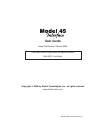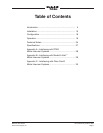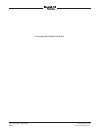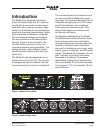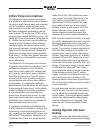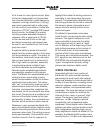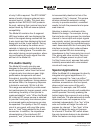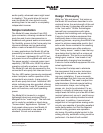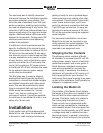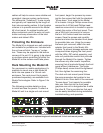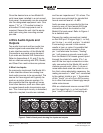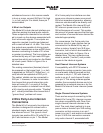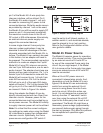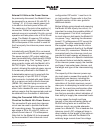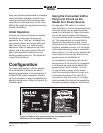
Model 45 User Guide Issue Preliminary 2, March 2009
Studio Technologies, Inc. Page 7
of its 2-wire-to-4-wire hybrid circuits. Each
of the two independent circuits provides
low noise and distortion, good frequency
response, and high return-loss (“nulling”),
even when presented with a wide range
of 2-wire party-line conditions. Unlike tele-
phone-line (“POTS”) oriented DSP-based
hybrid circuits, the Model 45’s analog
circuitry provides extended frequency
response. With a pass band of 100 Hz
on the low end and 8 kHz on the high
end natural-sounding voice signals can
be sent to, and received from, the 2-wire
party-line circuit.
A hybrid’s ability to isolate the transmit
signal from the receive signal in the 2-wire-
to-4-wire interface is critical. The quality of
this isolation, technically known as return-
loss or trans-hybrid loss, is measured in
dB. A high value is important, especially
in applications where multiple 2-wire-
to-4-wire interfaces are used together.
Remote sports broadcast applications
are especially sensitive to this require-
ment. The Model 45’s sophisticated auto
nulling function uses analog circuitry
under microprocessor control to achieve
significant trans-hybrid loss. This return-
loss “null” is achieved by making a set of
adjustments to account for the resistive,
inductive, and capacitive conditions that
are present on the connected 2-wire party-
line circuit. The party-line’s conditions are
the sum of the impact made by the type
and quantity of cable, the connected user
devices, and the intercom power source.
Whenever a user presses the Model 45’s
auto null pushbutton switch digital circuitry
adjusts the analog hybrids to achieve their
maximum return-loss. The nulling process
takes approximately 12 seconds for each
interface channel. And it’s important to
highlight that while the nulling process is
automatic, it only takes place upon user
request. The parameters obtained during
the nulling process are stored in nonvola-
tile memory; power interruptions won’t
require the auto nulling function to be
performed again.
The Model 45 generates a sine-wave
audio tone for use during the auto nulling
process. The signal’s frequency is soft-
ware-controlled to maximize the ability
of the hybrid circuits to reach a “deep”
null. In addition, at the beginning of each
auto nulling sequence a short period of
24 kHz tone is sent to the associated
channel of the 2-wire party-line interface.
This serves as a microphone disable (“mic
kill”) signal for user devices such as the
RTS BP325. By automatically disabling
“open” microphones the auto nulling
process can achieve a better result.
4-Wire Interfaces
Associated with the 4-wire portion of
the Model 45’s dual-channel interface
are analog line-level inputs and outputs.
These are intended to interconnect with a
variety of 4-wire devices, including matrix
intercom systems, audio-over-fiber trans-
mission systems, and specialized audio
equipment. The input and output circuitry
is transformer-coupled to minimize the
chance of hum, noise, or ground “loop”
issues. The nominal input and output
levels are +4 dBu, helping to ensure
compatibility with professional audio
equipment. Some digital matrix intercom
systems use other nominal levels but with
their configuration flexibility they can be
easily adjusted to match the Model 45. For
example, the Riedel Artist® system has a
nominal level of +6 dBu so an adjustment



